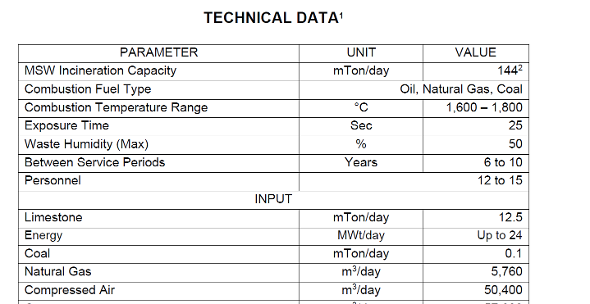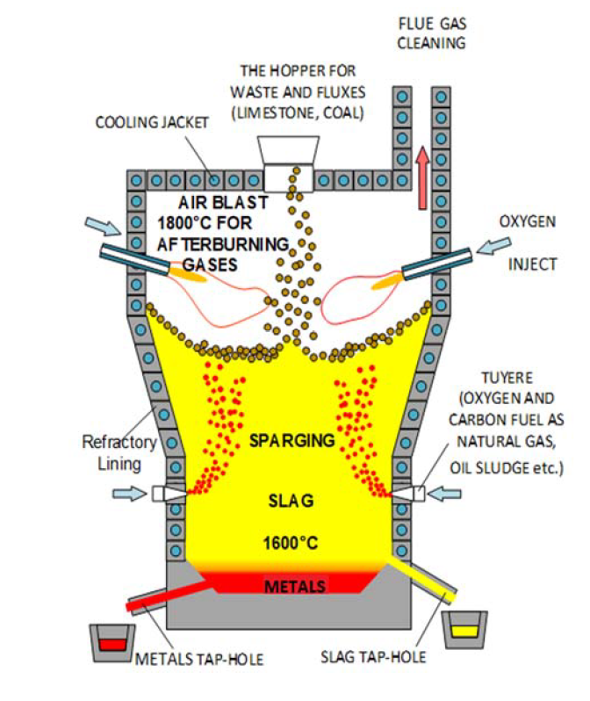Internationale Partnersuche
Innovation & Technologie Angebot
Environmentally friendly waste-to-energy (WtE) technology based on high temperature matter conversion processes
Country of Origin: Cyprus
Reference Number: TOCY20190415001
Publication Date: 15 April 2019
Summary
Α Cypriot engineering SME, specialized in waste management offers an innovative, tested and confirmed solution for the WtE industry, based on the molten slag principle adopted from metallurgy industry, with both environmental and economic advantages. The solution can be customized according to client needs. Waste management industries, engineering companies, municipalities and city councils are sought for joint venture agreement or commercial agreement with technical assistance.
Description
Cypriot based engineering SME specializing in waste management solutions is offering a new high temperature waste-to-energy (WtE) technology, which improves the waste-to-energy combustion process safety and at the same time simplifies the air pollution control (APC) equipment. The company represents R&D entities and manufacturing corporations in Russia, specialized in various technology applications and industrial facility design.
The currently available WtE technologies utilized in the EU are experiencing a number of issues, commonly described as “technical limits achievement” and “lack of innovative concepts”. As a result, permanent organic pollutants a.k.a. POPs (dioxins, furans, benz(a)pyrene etc.) are dealt with a traditional way, i.e. chemically treated (leachate) and stabilized, then landfilled as “hazardous materials”. On the other hand, the EU and the EC are tightening tolerances and enhancing control over emissions, air/soil pollution etc. On top of it, China which used to accept large volume of EU waste in the past, banned most of municipal waste (including 100% of plastics) since January 2018. As a result, Europe, US and some other countries which used to rely on waste exports to China, are now seeking for other options. WtE companies are forced to raise their fees, resulting in end users paying higher utility bills.
The SME’s state-of-the-art technology addresses the POPs subject by decomposing them in the high temperature furnace. Besides the obvious environmental advantages, the technology benefits its users economically, since there’s no need for sophisticated air pollution control (APC) / end-of-pipe flue gas treatment facilities in the first place.
Waste is combusted at high temperatures causing all organic matter including but not limited to pollutants like dioxins, furans and benzo(a)pyrene to be safely annihilated. The ashes are melted into the chemically neutral vitrified slag, encapsulating unwanted elements.
The waste is continuously loaded from the conveyer through the top hopper which prevents flue gases to escape while it’s open. Inside the combustion chamber, the melted matter is intensively agitated, while being oxidized by oxygen injected through the tuyeres below the melted matter surface.
Mineral components of the waste are dissolved in the molten slag and continuously top-up its volume. Flue gases exiting from the chamber are burned above the surface in presence of oxygen, which is injected through the tuyeres above the melted matter level. The flue gases temperature in the chamber upper zone is ranging between 1,600°C and 1,800°C. Flue gases are sent to the boiler, where steam for energy generation is produced, and then to the APC system. As the slag accumulates, it is removed out from the chamber through the tap-hole and then sent for recycling after it solidifies. If the waste contains metal, this melted metal accumulates in the furnace bottom a.k.a. the hearth, which is also removed from the furnace through another (designated) tap-hole.
Flue gases are sent to the afterburner, then to the boiler, cyclone, through the exhauster to the venturi tube and the spray scrubber. The design allows to use natural gas or oil or coal as the ignition fuel, while hydrocarbon waste, after-consumer plastics, and ELTs are used as complimentary fuel.
Some additional advantages of the technology:
- Facility may include the plasma after-Burner unit.
- Facility is fully automated and may be remotely accessed and controlled via Ethernet / Internet.
- Waste incineration in the main chamber at 1,600°C. Waste particles size 0-100 mm (optionally, a bulk load facility design is offered)
- All toxins are de-composed completely, with next to zero chances for re-formation
- No flue gas escape through the waste loading hopper
Waste management industries, engineering companies, municipalities and city councils are sought for joint venture agreement or commercial agreement with technical assistance.


Advantages and Innovations
The SME’s state-of-the-art technology addresses the permanent organic pollutants (POPs) subject by decomposing them in a high temperature furnace. Also, heavy and other metals are dealt with in common metallurgic way, being melted and discharged through the taphole into the slabs for further recuperation. Besides the obvious environmental advantages, the technology benefits its users economically, since there’s no need for sophisticated air pollution control (APC) / end-of-pipe flue gas treatment facilities in the first place. As an additional benefit, the process versatility allows to treat multiple types of waste: sorted/unsorted municipal, plastic, tyres and rubber, hazardous, sewage solid residues/sludge, hospital, petrochemical etc.
Stage Of Development
Available for demonstration
Stage Of Development Comment
During the trials, all the main elements of the technology were tested. Process control techniques tested and improved. The possibility of processing randomly composed waste in the melted slag has been successfully tested. The process’ environmental benefits are confirmed.
Requested partner
The following partners are sought:
- Waste management industry players, engineering companies and technology providers interested to incorporate the proposed technology in one or more of their projects. The Cypriot SME will provide the technology and technical assistance in the designing and installation of the plant according to the projects requirements. The technology can be made available to the interested parties either under a joint venture agreement or a commercial agreement with technical assistance.
- End users, such as municipalities and city councils, planning to build a Waste Management / Waste-to-Energy facility. The Cypriot SME can provide the design, construction and operation of such facility according to the client’s needs.
- Investment Funds and/or Venture Capital entities willing to invest into new technology with good prospect of becoming next step in the waste management industry.
Cooperation offer ist closed for requests

